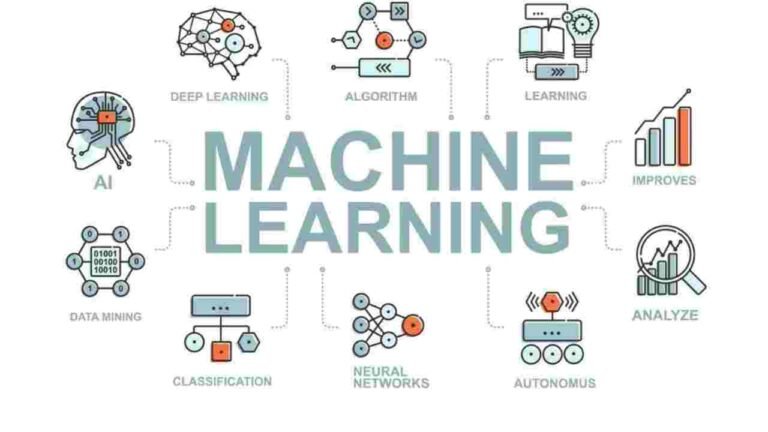1. Introduction to Machine Learning Algorithms
Machine Learning (ML) algorithms are the foundation of AI applications that analyze data, identify patterns, and make decisions without explicit programming. Understanding different types of ML algorithms helps businesses and developers apply them effectively to solve real-world problems across industries.
Key Features:
- Analyze data to make predictions and decisions
- Enable automation and pattern recognition
- Applicable in finance, healthcare, retail, and more
2. Supervised Learning Algorithms
Supervised learning uses labeled datasets to train models, helping them predict outcomes for new, unseen data.
Popular Algorithms:
- Linear Regression: Predicts continuous values like sales forecasting or stock prices.
- Logistic Regression: Classifies data into categories, used in fraud detection or spam filtering.
- Decision Trees: Used for classification and regression tasks like customer segmentation.
- Support Vector Machines (SVM): Effective in image recognition, medical diagnosis, and text categorization.
Real-World Applications:
- Financial risk assessment and fraud detection
- Marketing campaign targeting and customer segmentation
- Predictive maintenance in manufacturing
3. Unsupervised Learning Algorithms
Unsupervised learning deals with unlabeled data, identifying patterns and groupings automatically.
Popular Algorithms:
- K-Means Clustering: Groups similar data points for market segmentation or image compression.
- Hierarchical Clustering: Builds tree-like structures for gene expression analysis and customer segmentation.
- Principal Component Analysis (PCA): Reduces data dimensionality for visualization and feature extraction.
Real-World Applications:
- Customer behavior analysis and product recommendations
- Fraud detection through anomaly identification
- Market research and data visualization
4. Reinforcement Learning Algorithms
Reinforcement learning involves training an agent to make decisions by rewarding desired actions and penalizing undesirable ones.
Popular Algorithms:
- Q-Learning: Helps agents learn optimal strategies in dynamic environments.
- Deep Q-Networks (DQN): Combines deep learning with Q-Learning for complex problem-solving.
Real-World Applications:
- Robotics and autonomous vehicles navigation
- Game AI development (e.g., AlphaGo)
- Supply chain optimization and inventory management
5. Neural Networks and Deep Learning
Neural networks, especially deep learning models, mimic the human brain to process large amounts of data and recognize patterns.
Popular Architectures:
- Convolutional Neural Networks (CNNs): Specialized in image and video recognition.
- Recurrent Neural Networks (RNNs): Used for time-series prediction, natural language processing, and speech recognition.
- Generative Adversarial Networks (GANs): Creates realistic synthetic data, used in image generation and simulations.
Real-World Applications:
- Facial recognition and security systems
- Voice assistants and speech-to-text applications
- Medical image analysis and diagnostics
6. Ensemble Learning Algorithms
Ensemble learning combines multiple models to improve prediction accuracy and reduce overfitting.
Popular Algorithms:
- Random Forest: Combines multiple decision trees for classification and regression.
- Gradient Boosting Machines (GBM): Sequentially builds models to correct errors of previous models.
- AdaBoost: Focuses on difficult-to-predict instances for improved accuracy.
Real-World Applications:
- Credit scoring and risk management in finance
- Predictive analytics for business intelligence
- Marketing optimization and sales forecasting
7. Applications Across Industries
- Healthcare: Disease prediction, patient monitoring, and drug discovery using ML models.
- Finance: Fraud detection, loan approvals, and stock market prediction.
- Retail: Product recommendations, customer segmentation, and inventory management.
- Transportation: Autonomous driving, traffic prediction, and route optimization.
- Energy: Predictive maintenance, demand forecasting, and energy optimization.
Key Features:
- Data-driven decision-making across sectors
- Automates complex processes and enhances efficiency
- Provides predictive and actionable insights
Conclusion
Machine learning algorithms, from supervised and unsupervised learning to neural networks and reinforcement learning, are transforming industries by analyzing data, predicting outcomes, and automating decision-making. Understanding these algorithms and their real-world applications helps businesses leverage ML to enhance efficiency, reduce costs, and gain a competitive edge.

